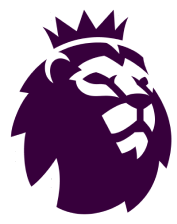For the first time the conversations that take place between Premier League referees and the Video Assistant Referees (VAR) have been revealed, to give fans greater knowledge of the decision-making processes by match officials in matches.
Howard Webb, the former Premier League referee now Chief Operating Officer at PGMOL, the organisation that oversees the League’s match officials, explain in an interview with ex-Liverpool striker Michael Owen the processes that take place.
Webb uses incidents from fixtures this season to demonstrate how decisions between the officials on the pitch and those in the VAR hub in Stockley Park are made.
“I'm delighted to be here giving the football public the first opportunity to hear the rationale behind some of the decision-making that they see every week on their TV screens in Premier League games,” says Webb. “Really drawing that curtain back on some VAR processes that that have never been shown before. It’s really a great opportunity to break some ground.”
One example that is used is the penalty that was awarded to Newcastle United at home to Arsenal two Sundays ago at St James’ Park.
“We are going to show you the footage that people would see at home on their TV screens as normal,” says Webb. “And then we're going to show the same footage but with the audio of the officials overlaid.
“So you can hear what the on-field officials are saying to each other and also what the VAR and the AVAR [Assistant VAR] talking to each other when they're going through the checks."
With the match only seven minutes in and the score 0-0, the on-field referee Chris Kavanagh initially awarded Newcastle a penalty after he saw a fierce shot by Bruno Guimaraes appear to hit the arm of Arsenal defender Jakob Kiwior in the penalty area.
However, as the video above shows, the VAR for the match, Michael Salisbury, and his assistant VAR, Scott Ledger, reviewed the footage in the VAR hub and advised Kavanagh that they thought it should not be a penalty.
The slow-motion replays showed the ball first made contact with Kiwior's thigh. Kiwior was also tucking his arm into his side, rather than extending it out.
Kavanagh overturned his penalty decision and awarded Arsenal a drop-ball as he is meant to under the Laws of the game.
“So, it’s a really good use of VAR,” says Webb. “You will hear the officials also checking something called the APP, the attacking possession phase.
“They have to do that as well because when the referee goes to the screen, he might decide he wants to keep the penalty kick. It’s his call, at the end of the day.
“So, they have to check whether there is any other reason why the penalty shouldn’t stand, such as an offside.
"It takes a bit of time to go through that diligent process. But it’s worth doing so that when the referee goes to the screen he has got all the information he needs whether or not to turn the penalty over."






